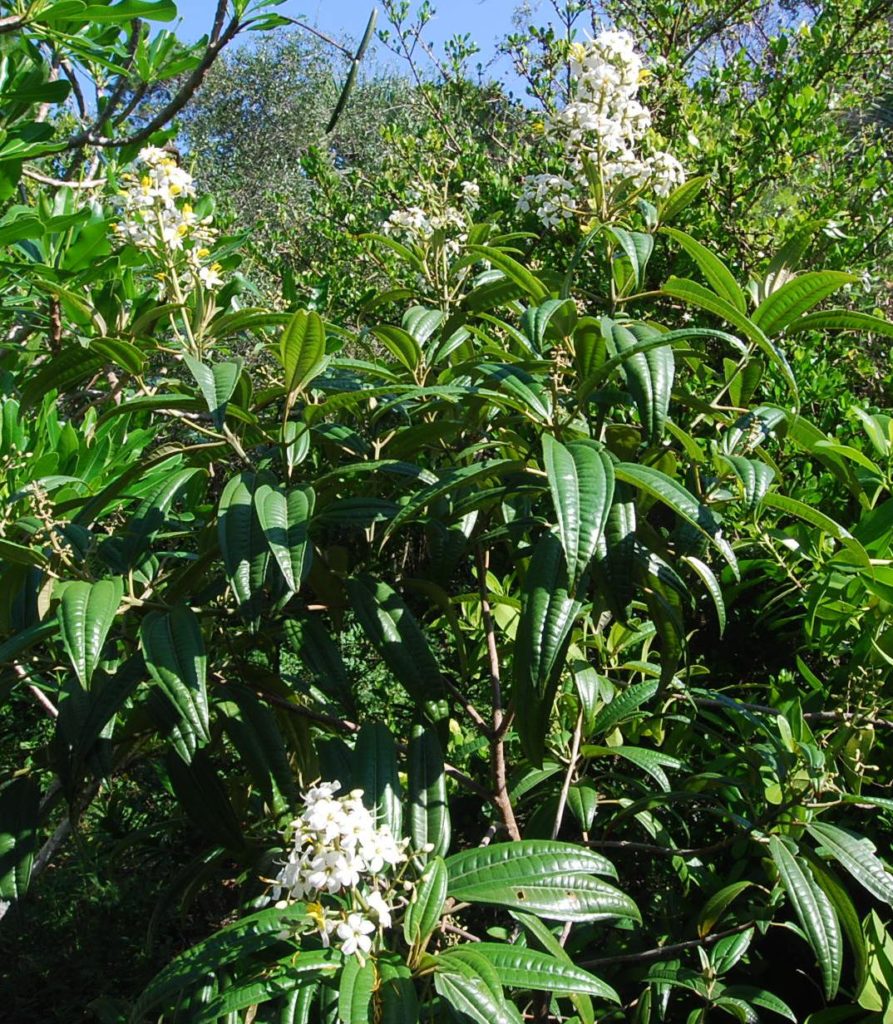
West Indian Lilac
Tetrazygia bicolor
West Indian Lilac occurs in the southern Dade County rocklands and the Keys. It can be planted through Palm Beach County and likes well drained, rich, slightly acid sandy soil with no added limerock.
Alkaline areas near a road, driveway or against a house are not good for this plant. It won’t tolerate salt air or flooding and extended drought may cause dieback. Full sun or partial shade is best.
West Indian Lilac will grow to 10 feet, yet can be kept lower with yearly pruning. The white and yellow flowers are attractive and the blueberry sized, black, many seeded berries are very attractive to birds. These are not bad tasting either, although the small seeds can be annoying.
Remember that ground limestone or dolomite will kill this plant because it raises the soil PH above neutral. The soil this plant grows in naturally is composed of pockets of decomposed leaves which is acidic, even though the bedrock is alkaline coral rock.
The leaves are tropical looking and quilted. Plant near pines and mix with Thrinax Palms, Coontie, Beach Creeper, Wild Coffee, Lignum Vitae, Saw Palmetto, Beautyberry, Marlberry, and other pine rockland species and wildflowers.
West Indian Lilac is one of the few native shrubs that produces flowers most of the summer. Try it for a tropical look.